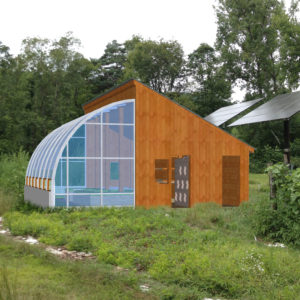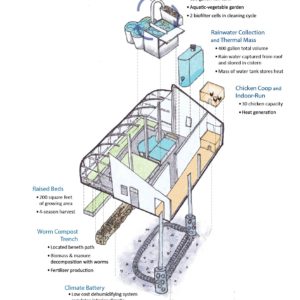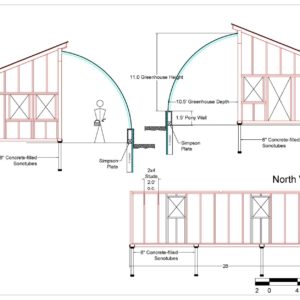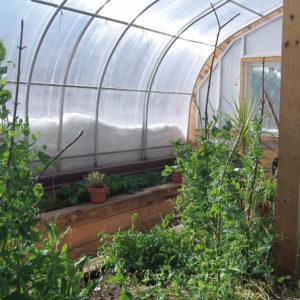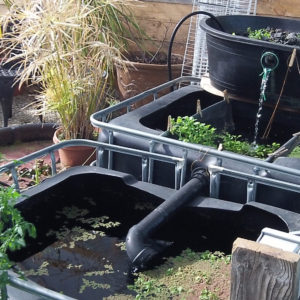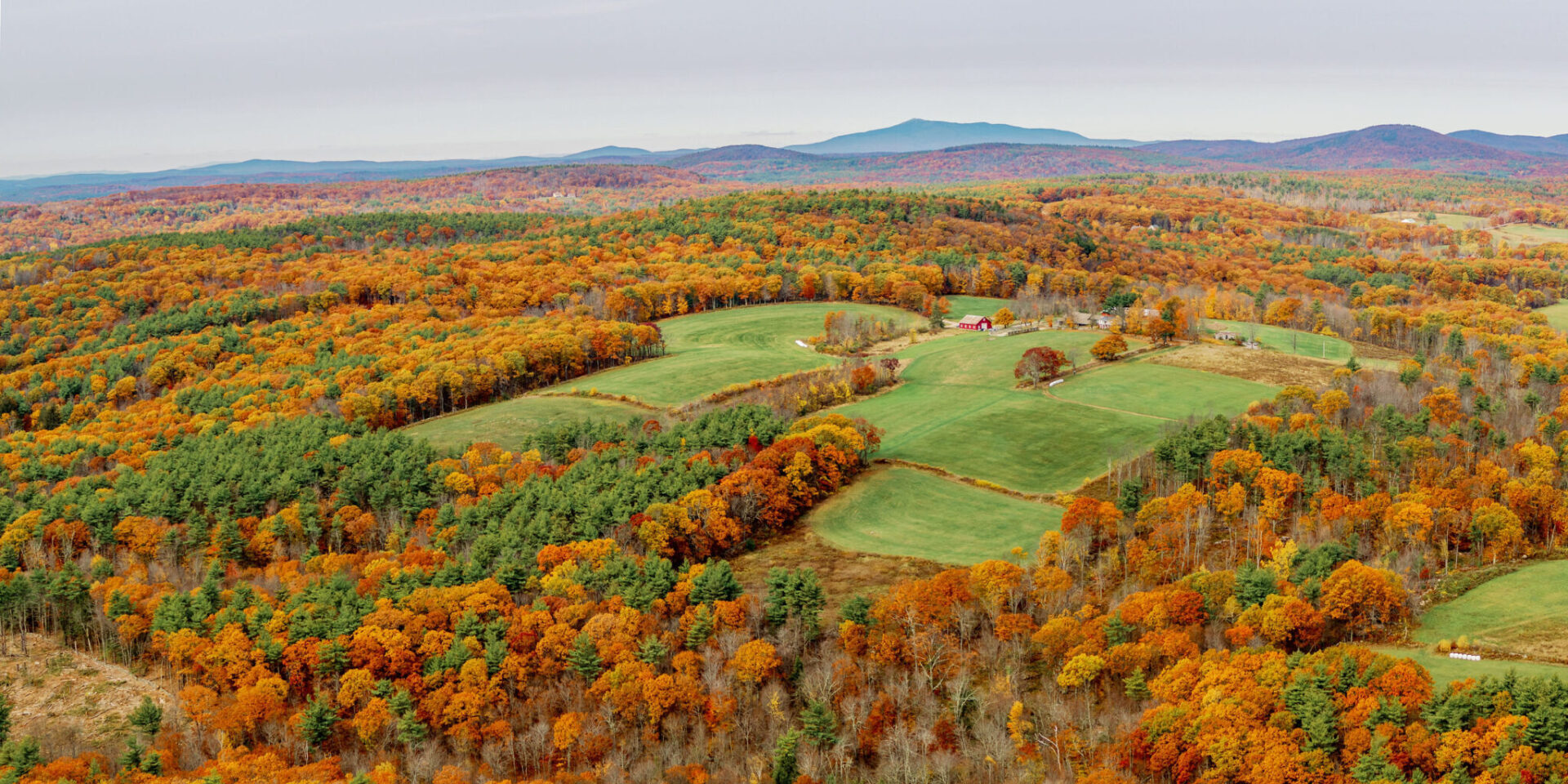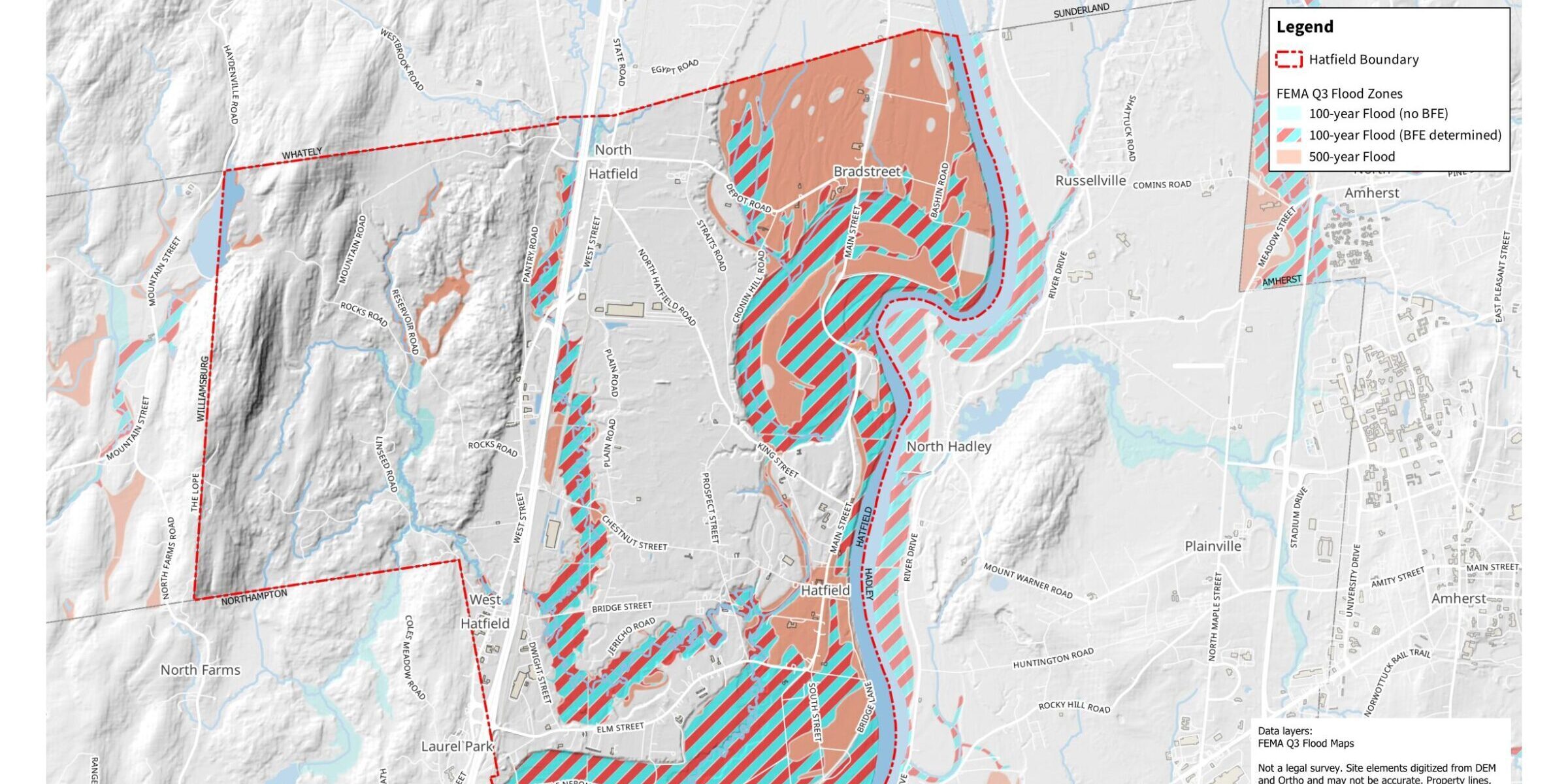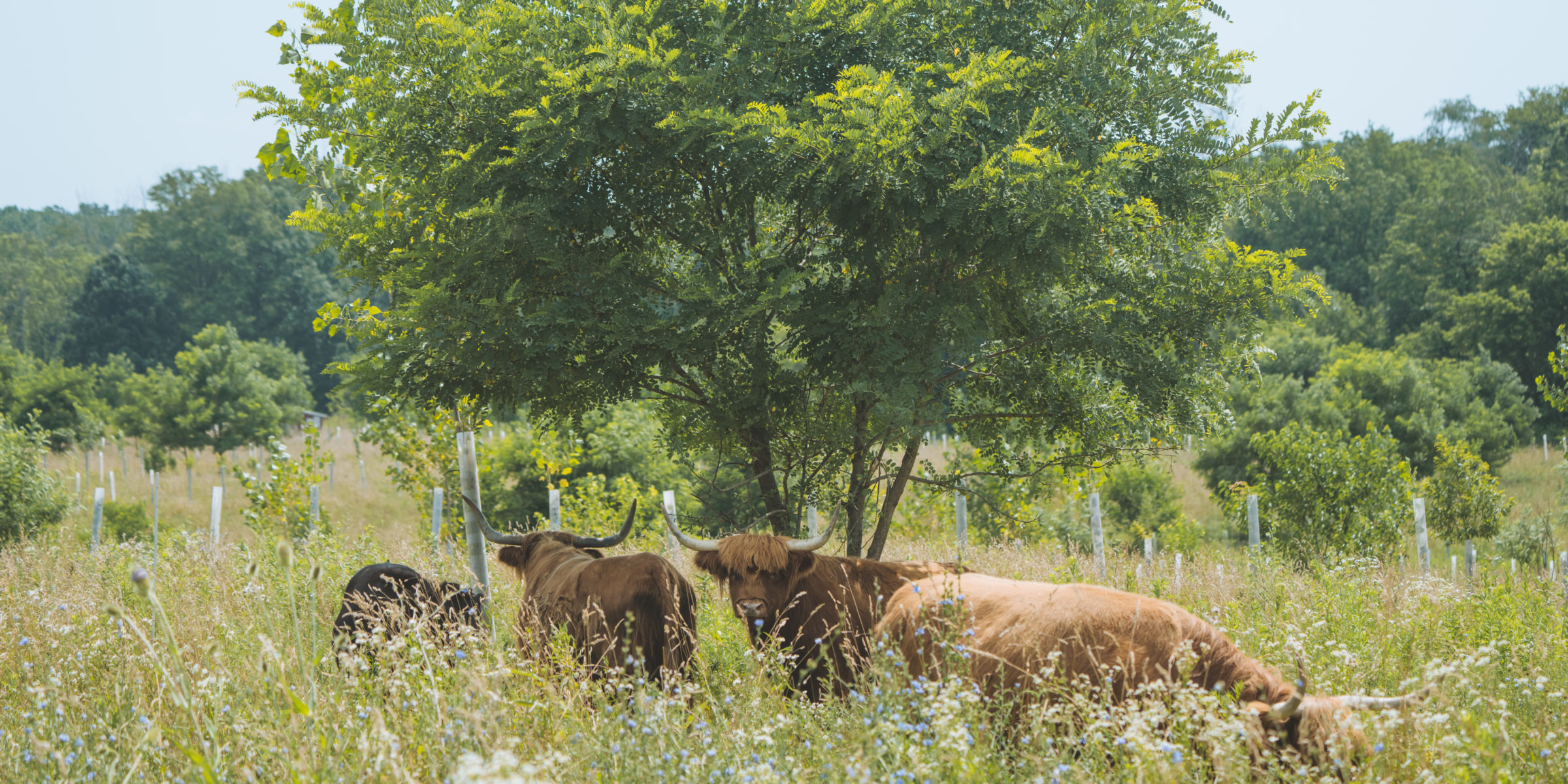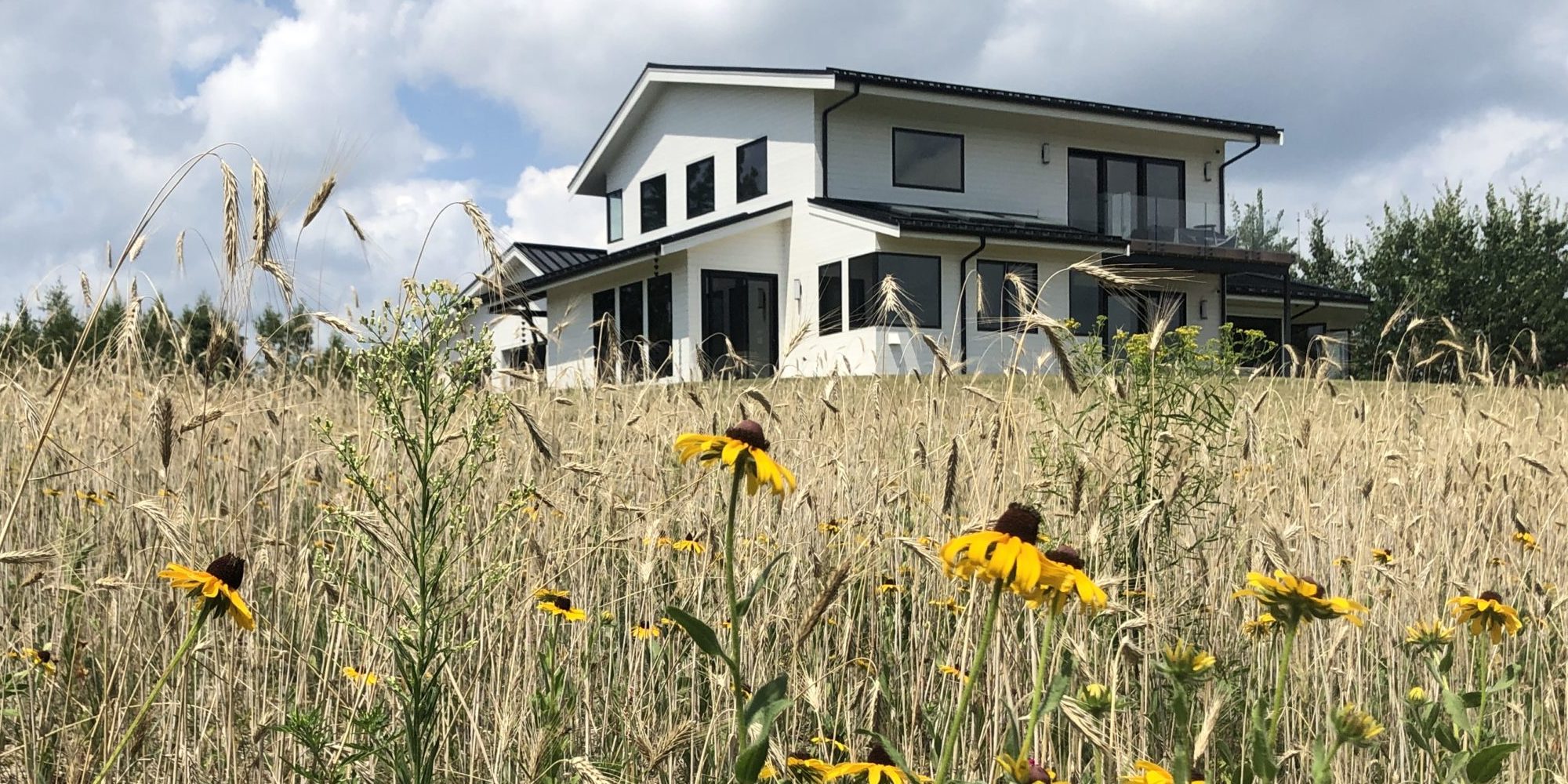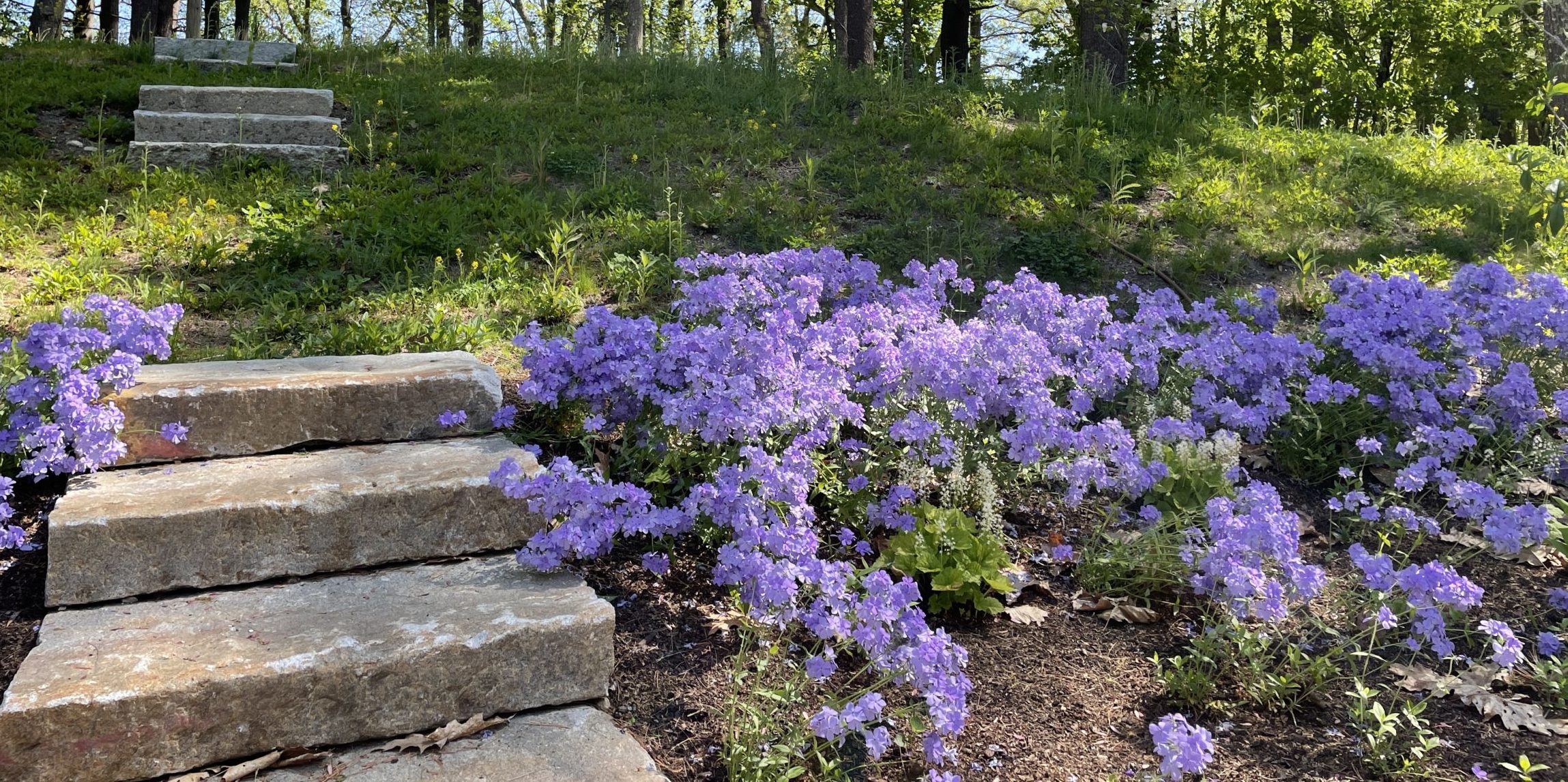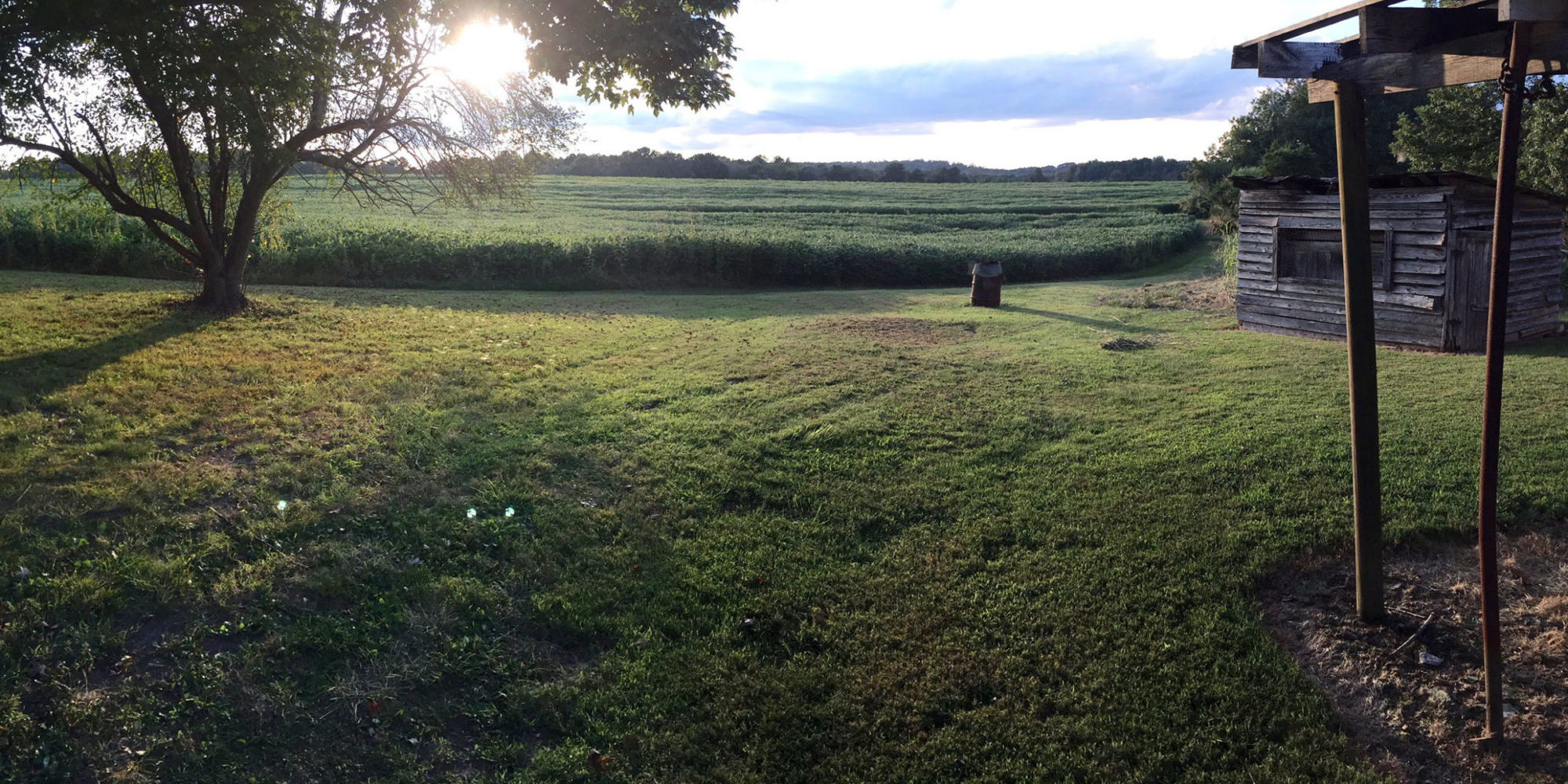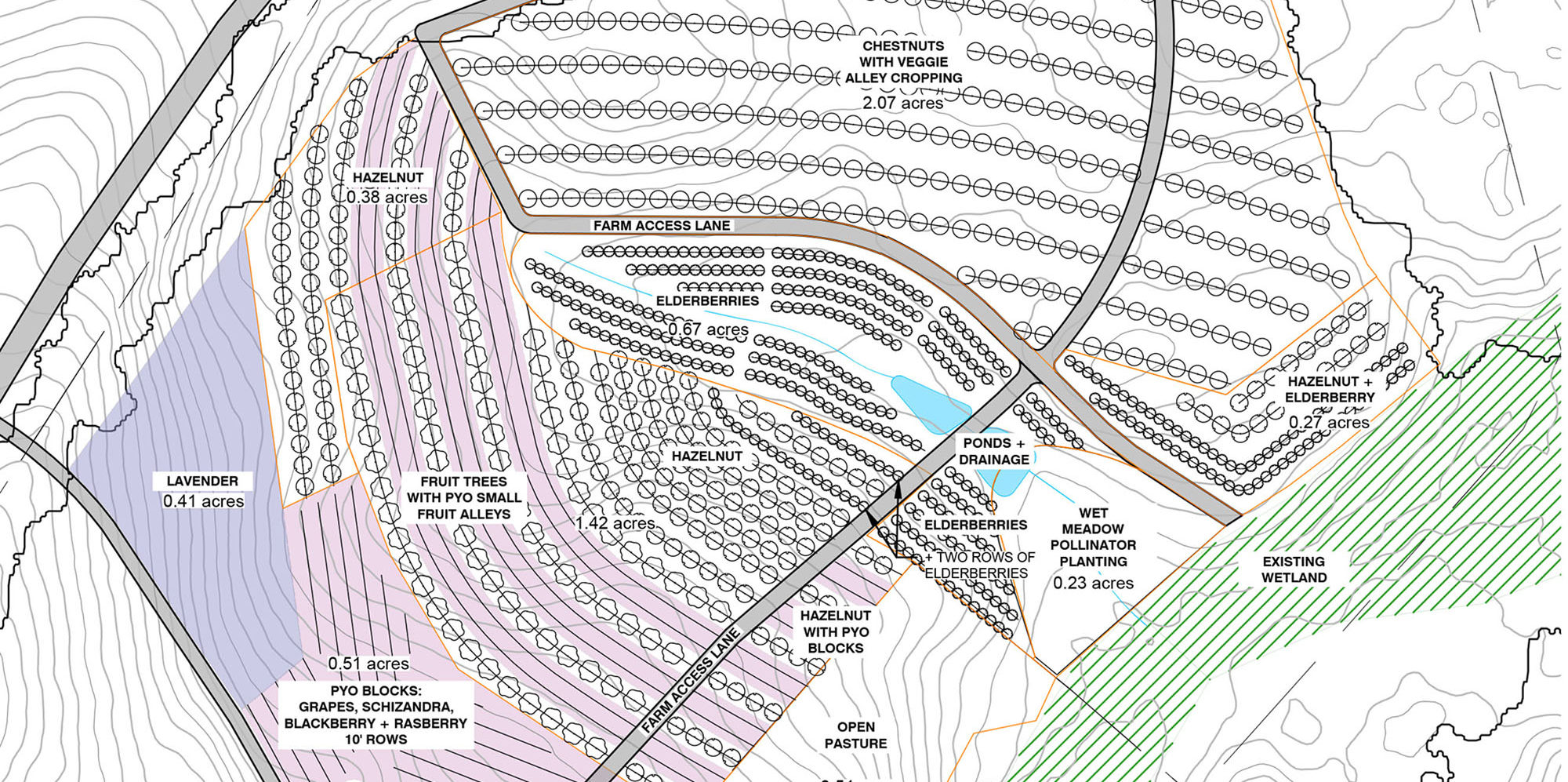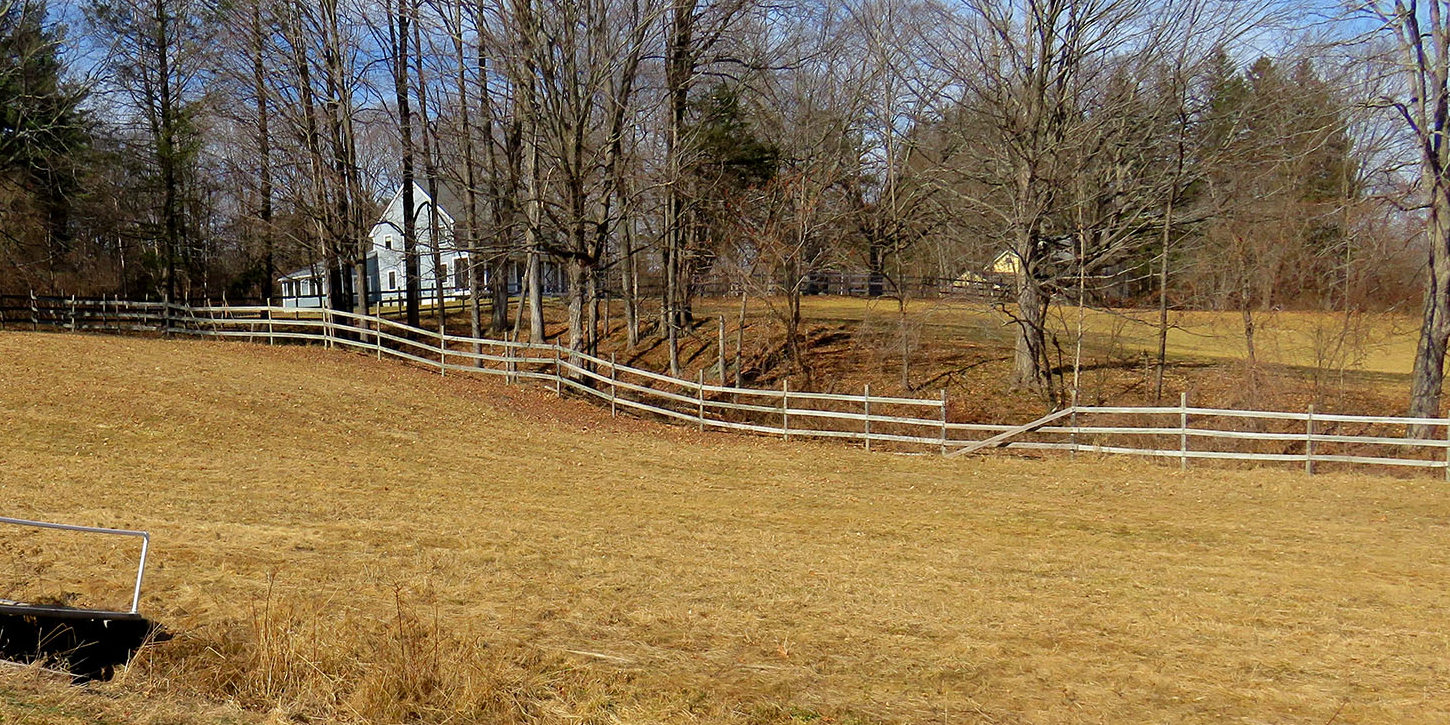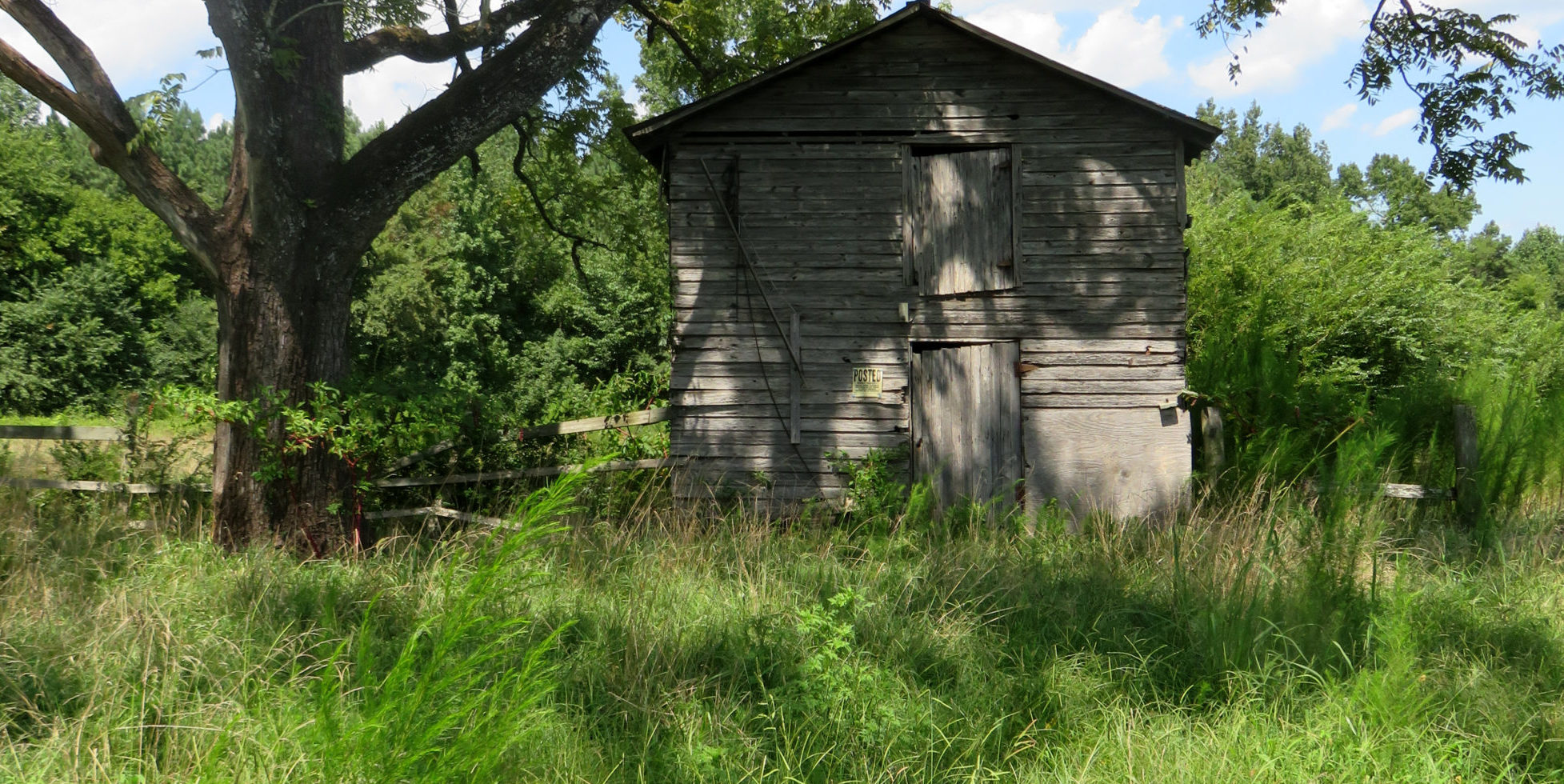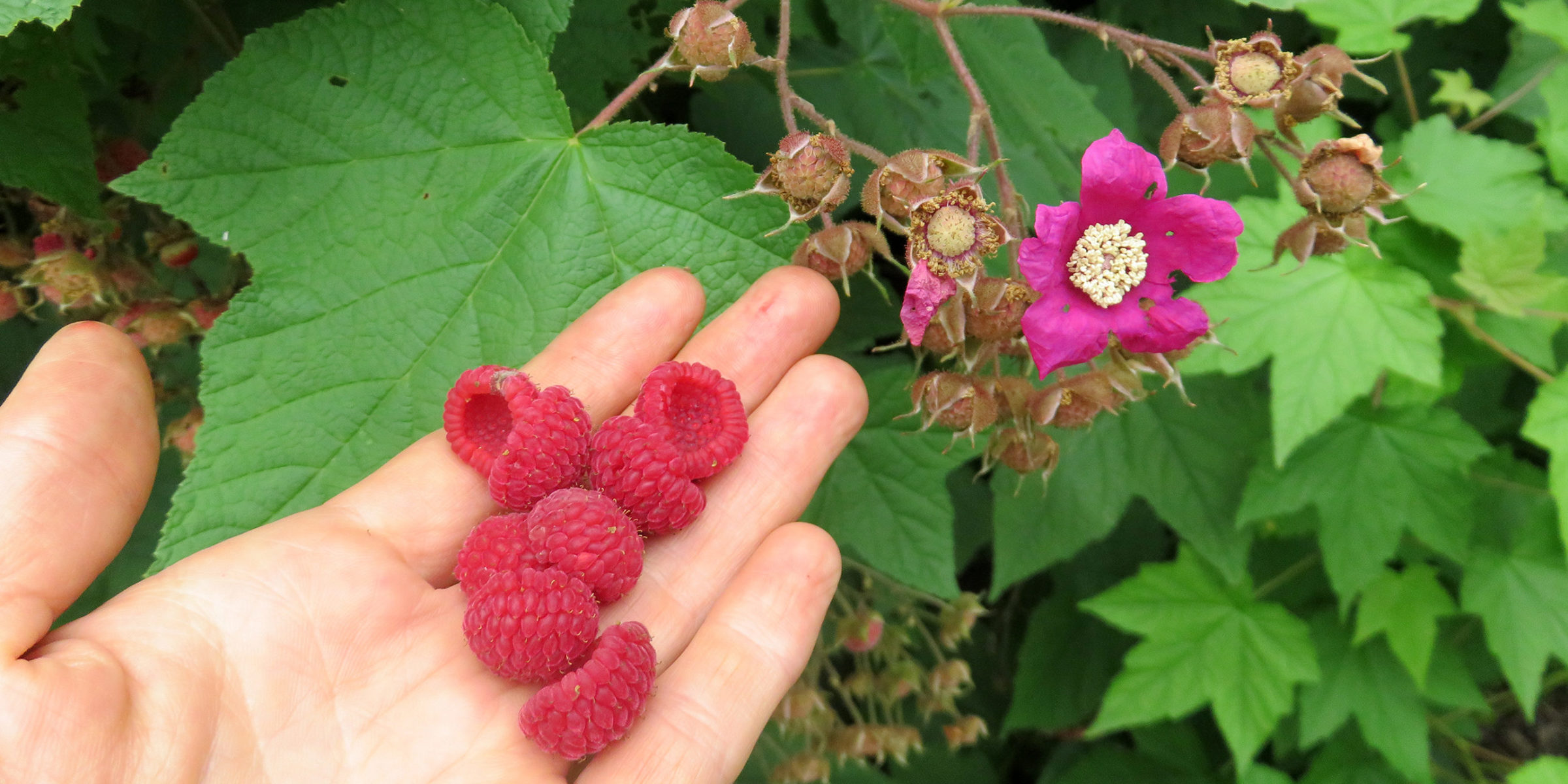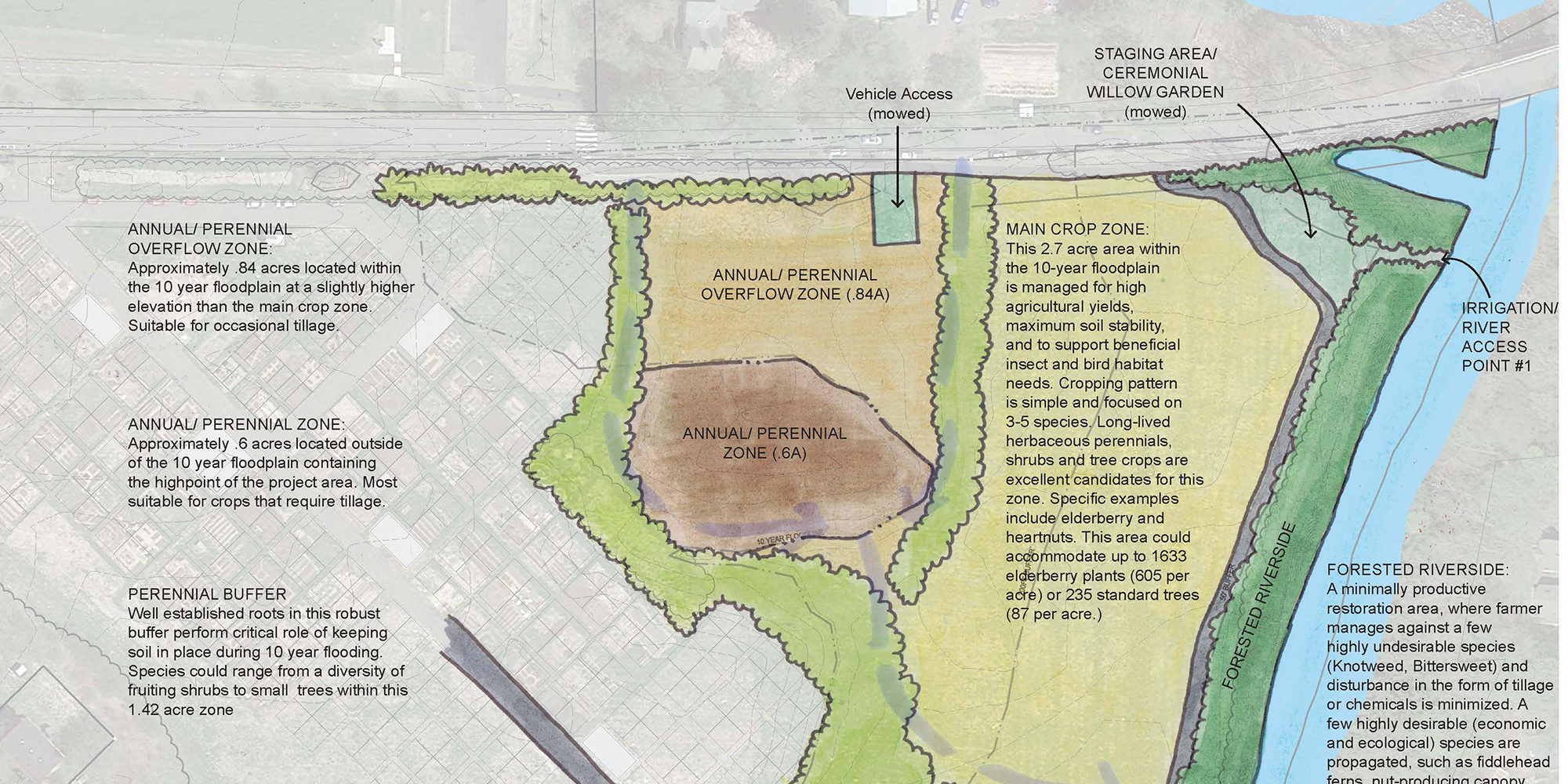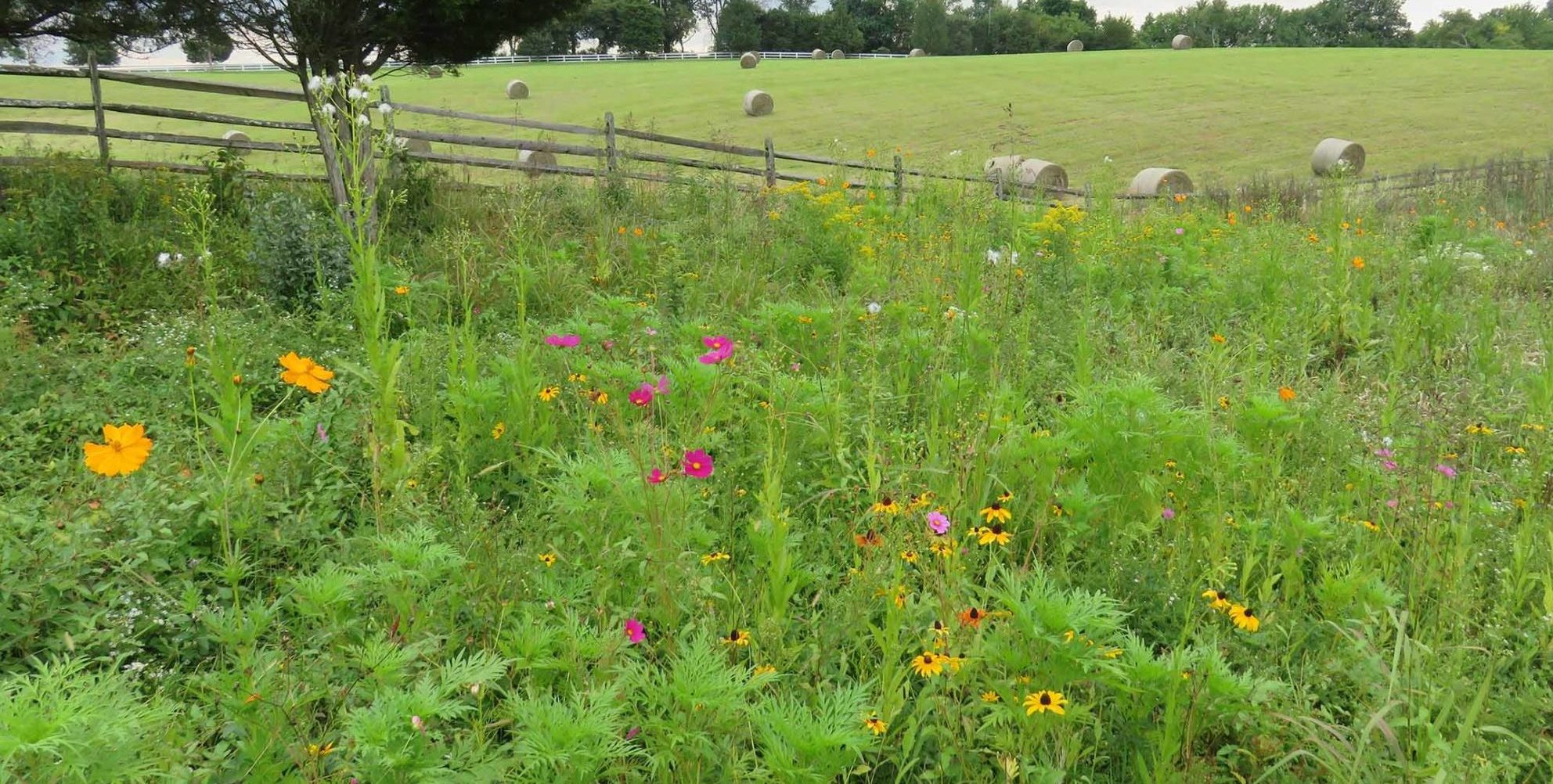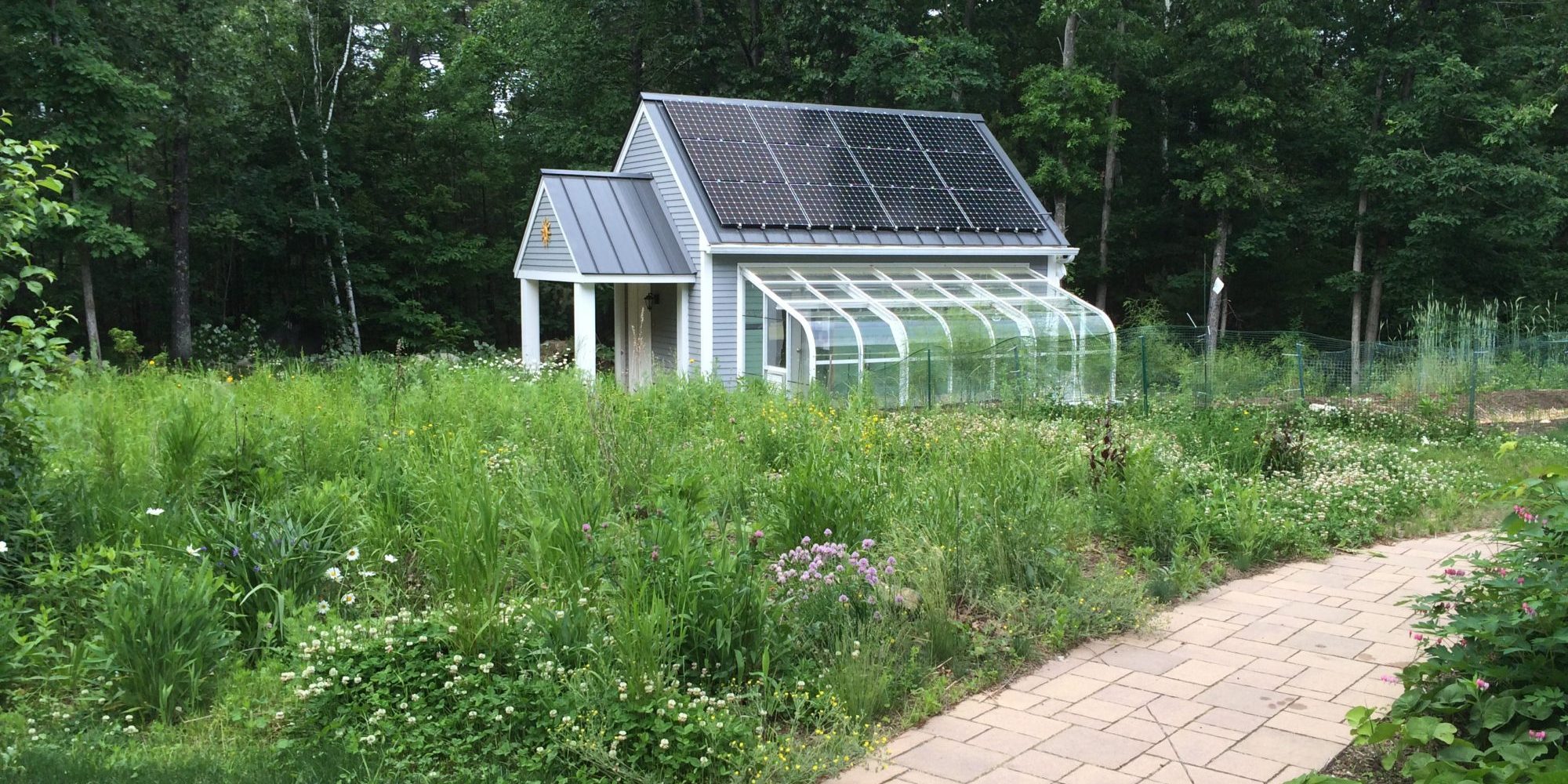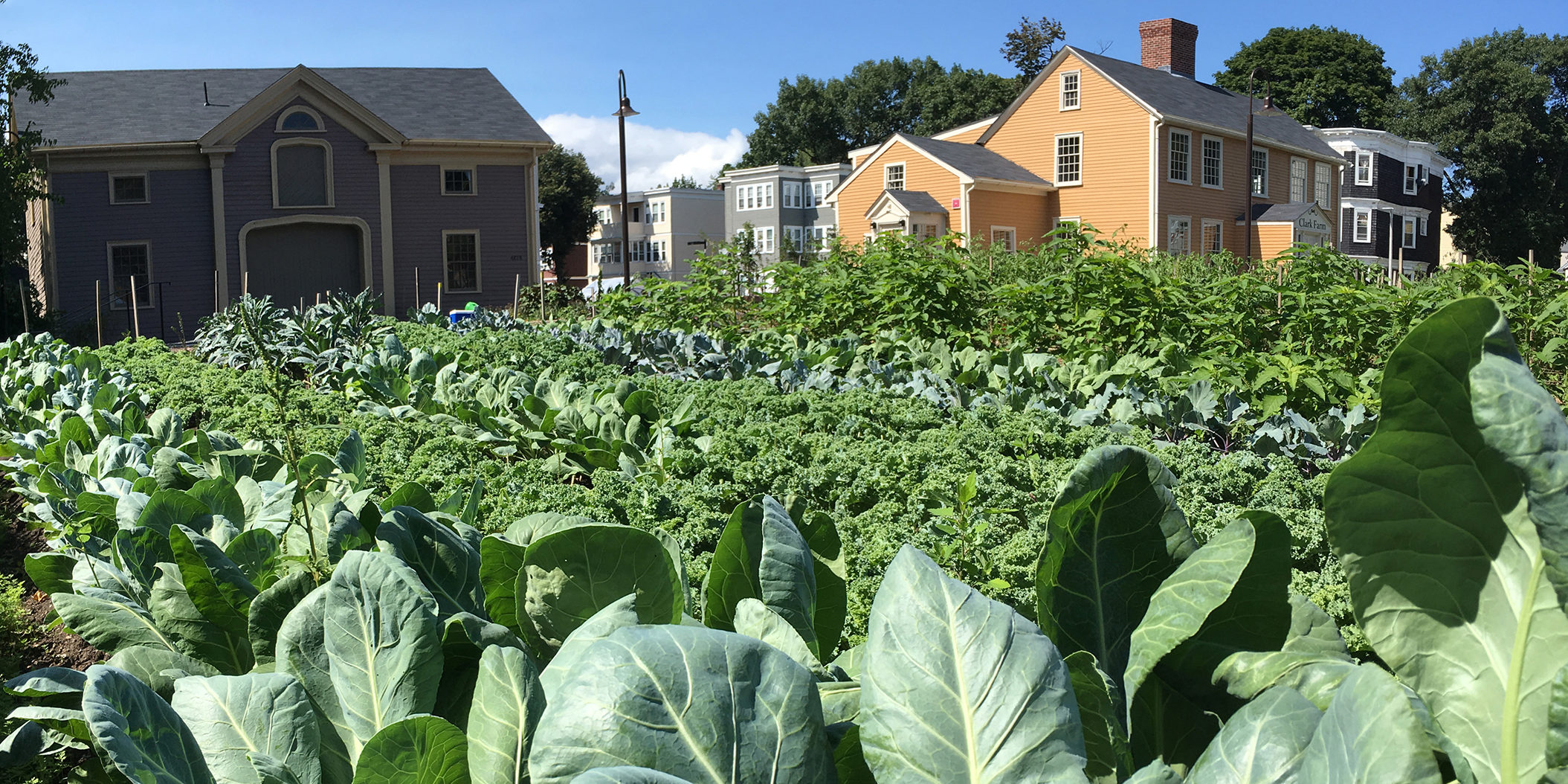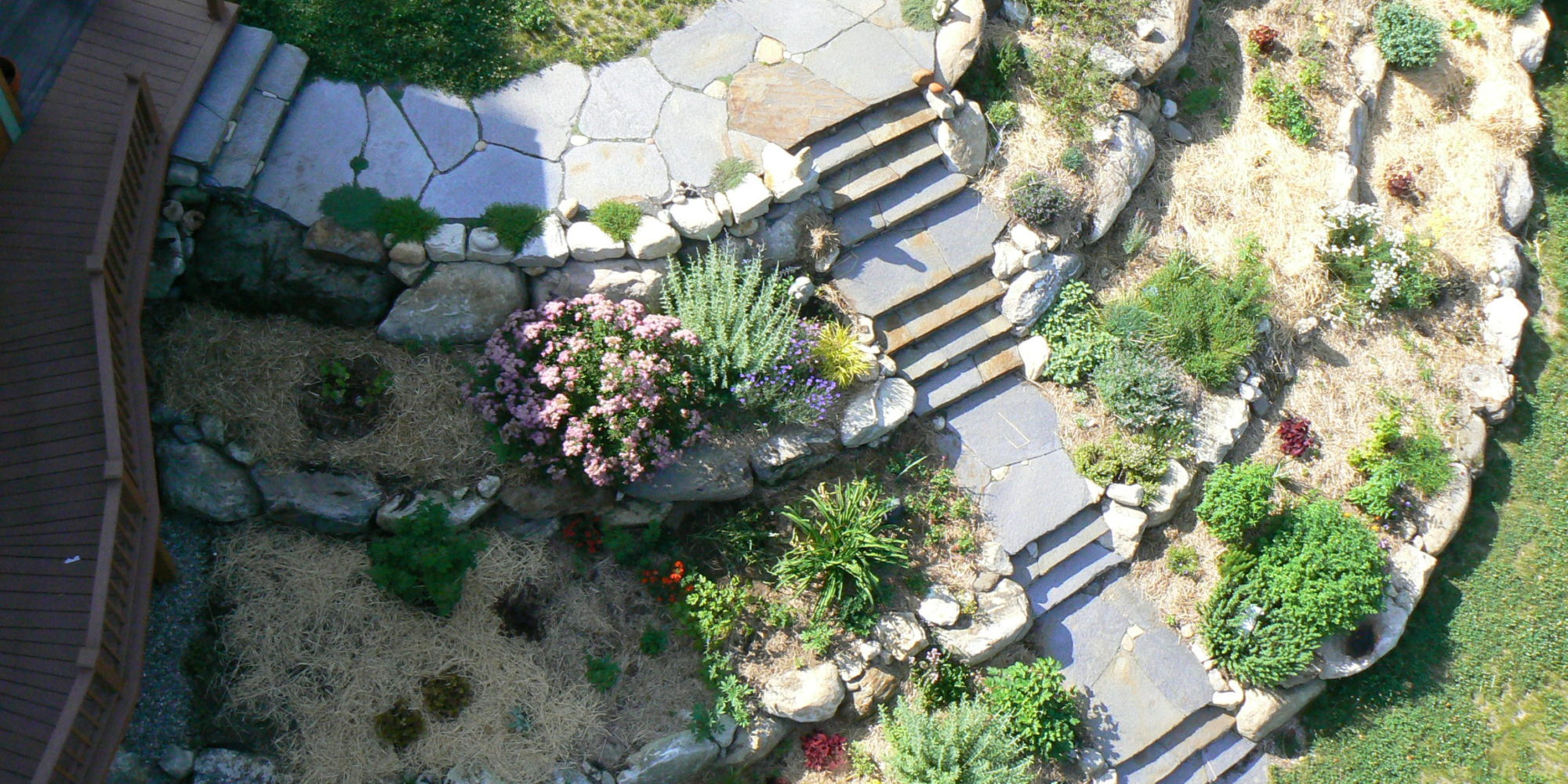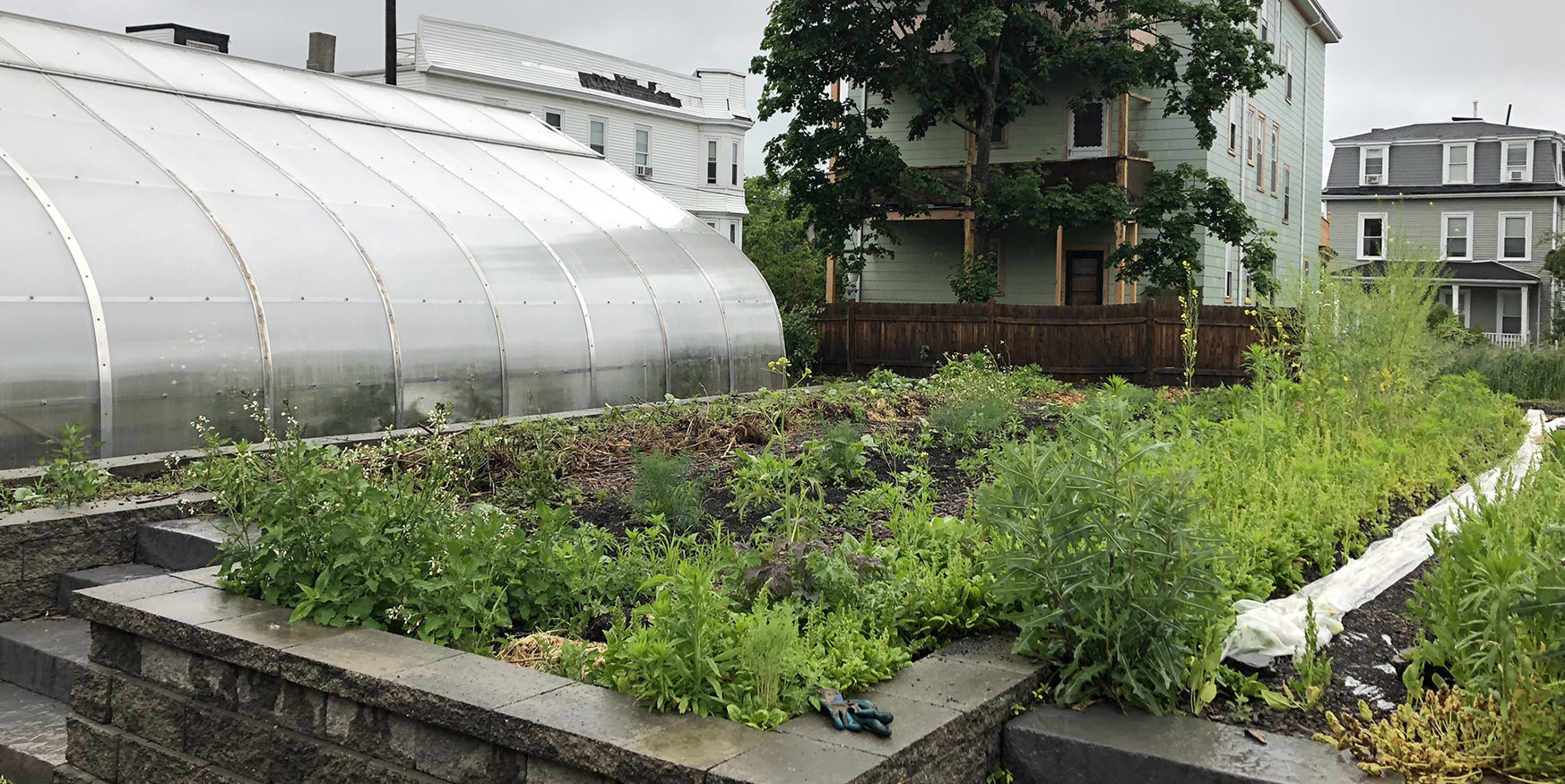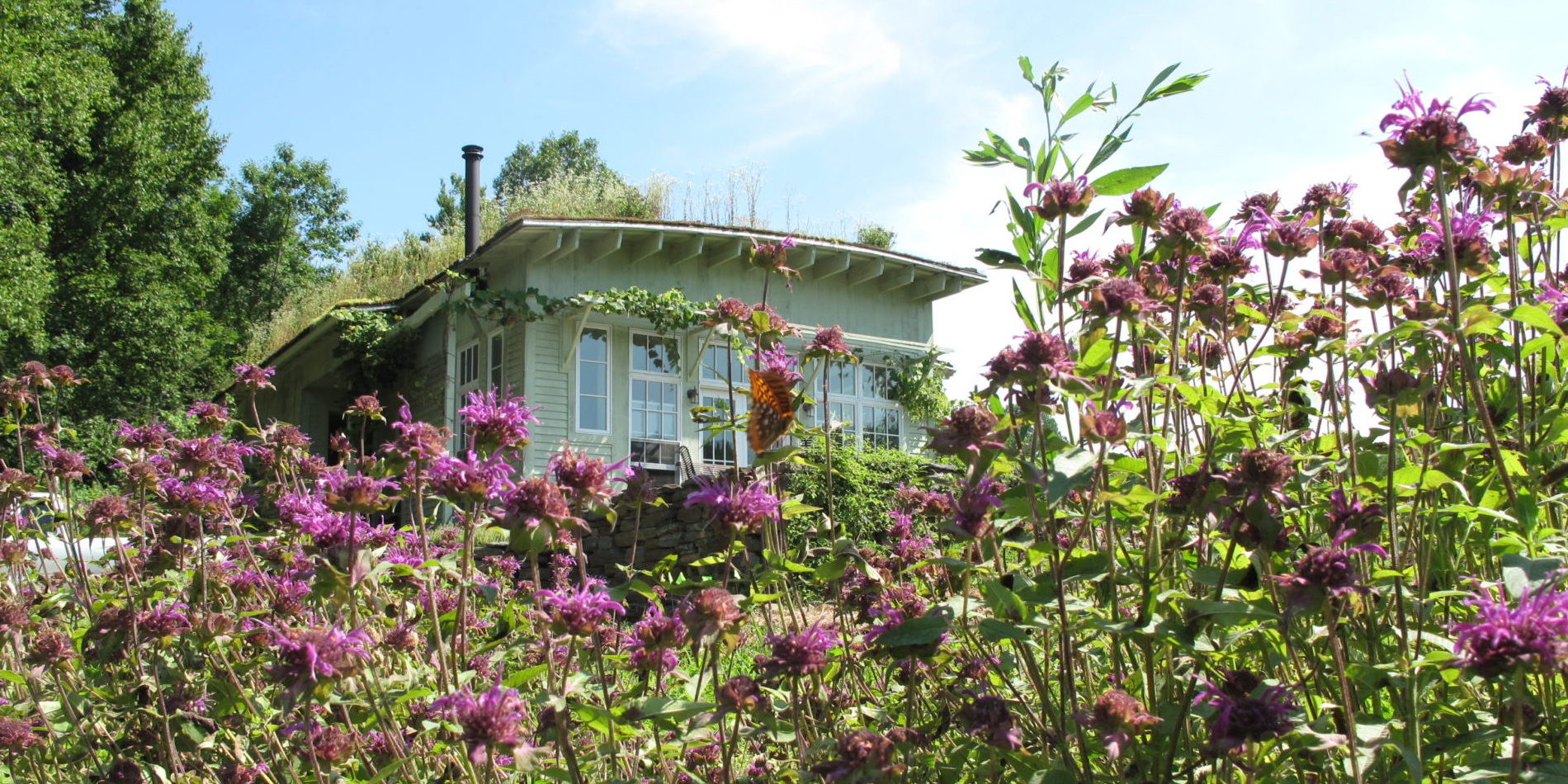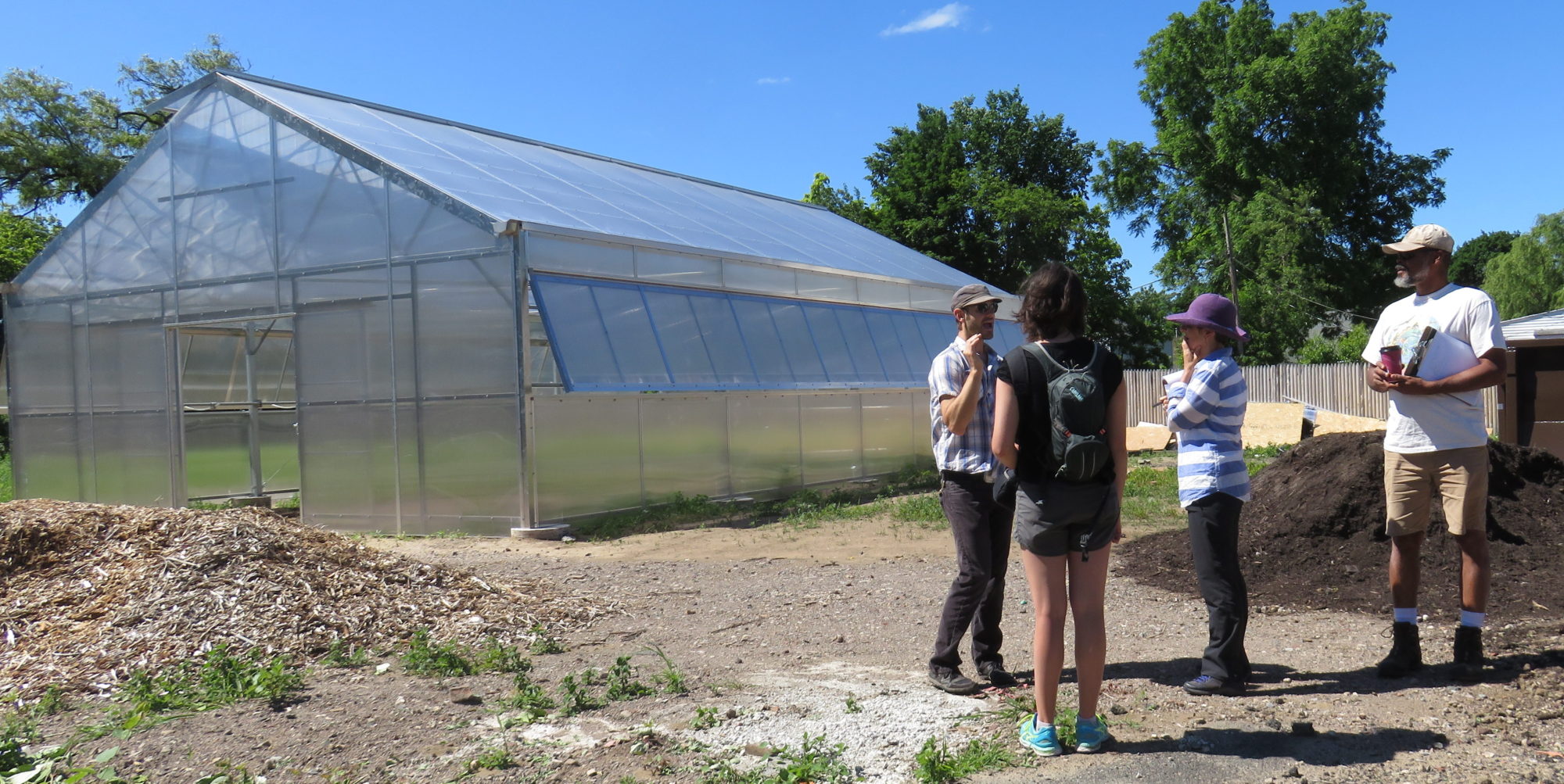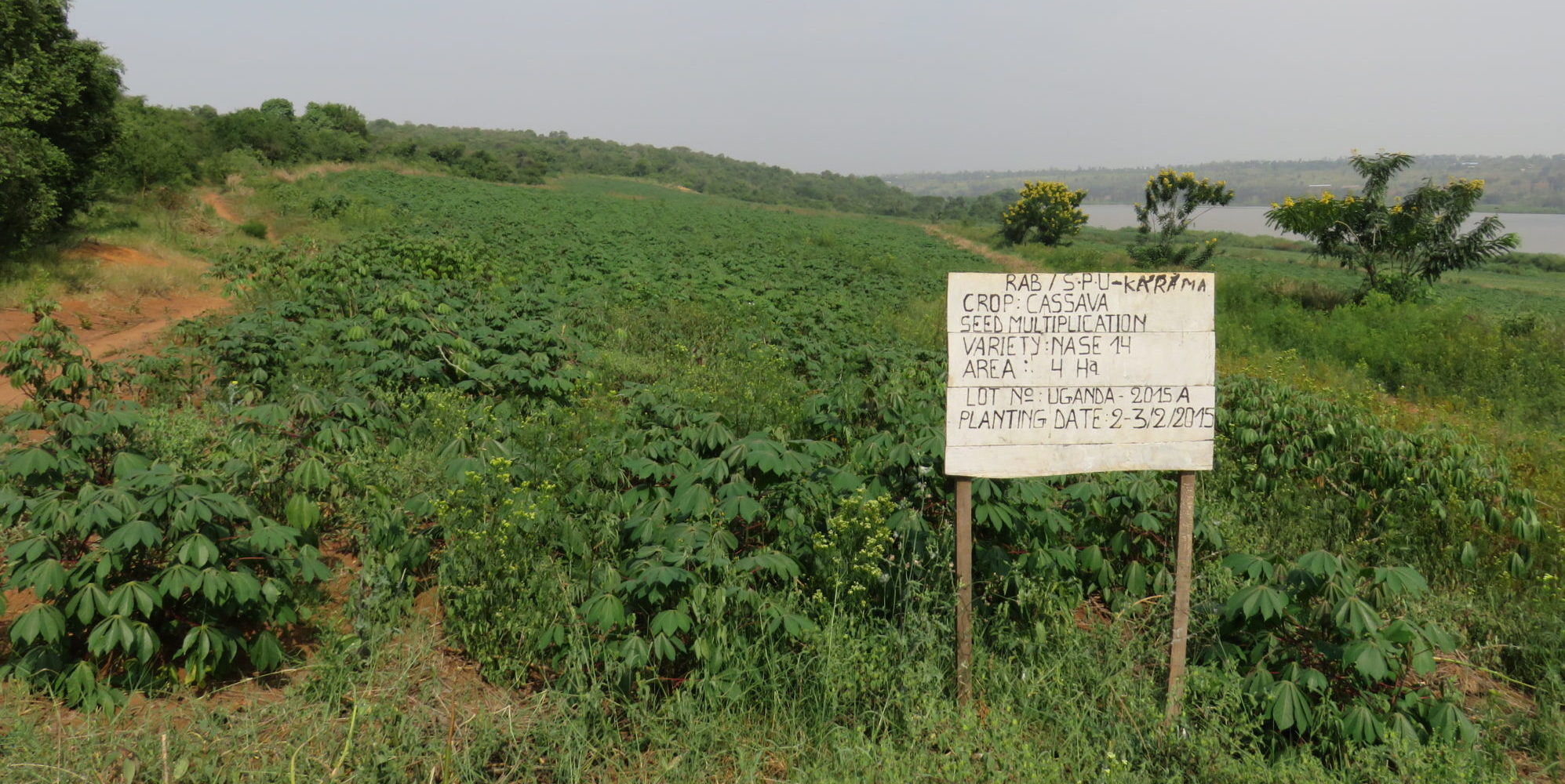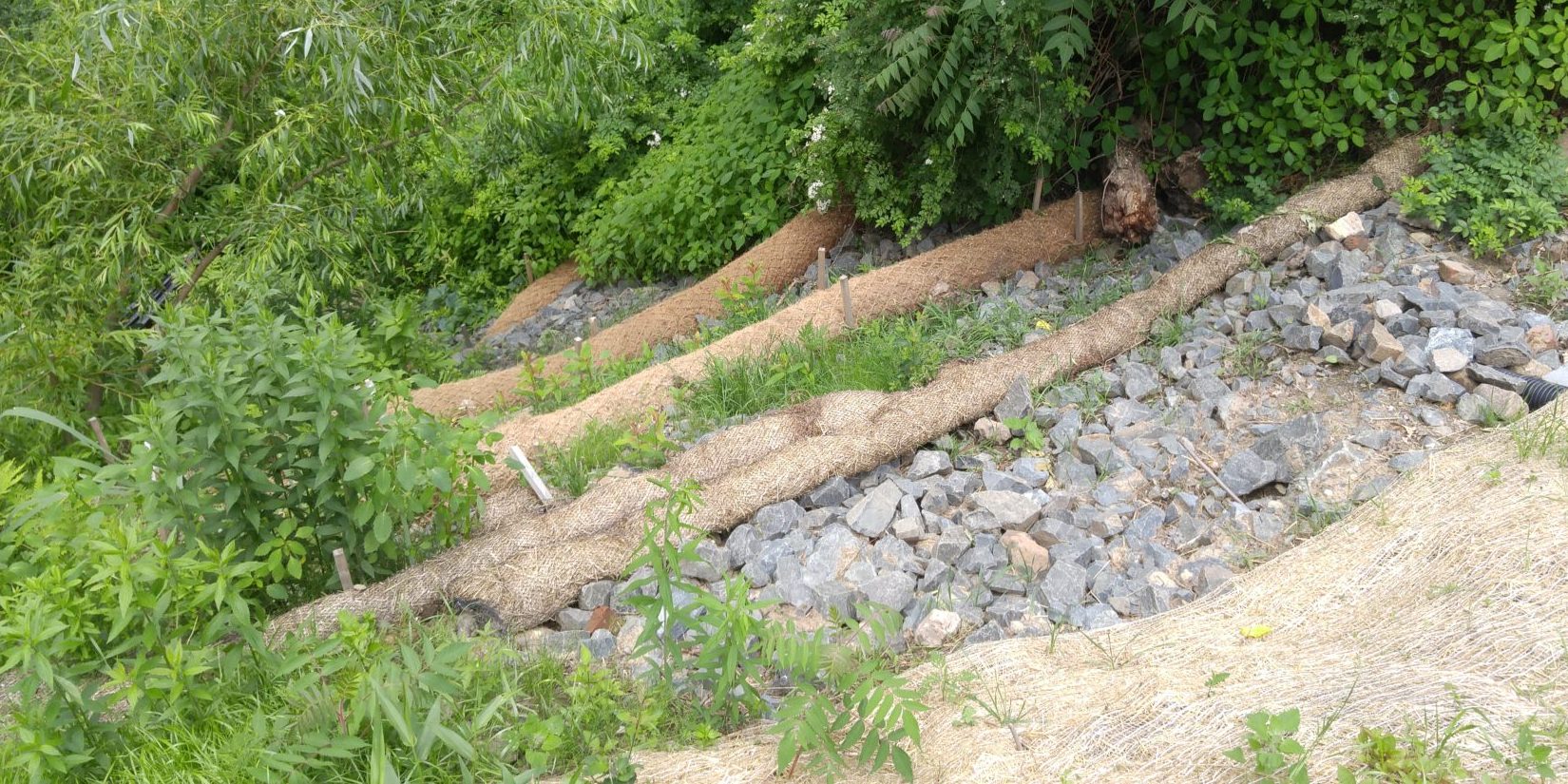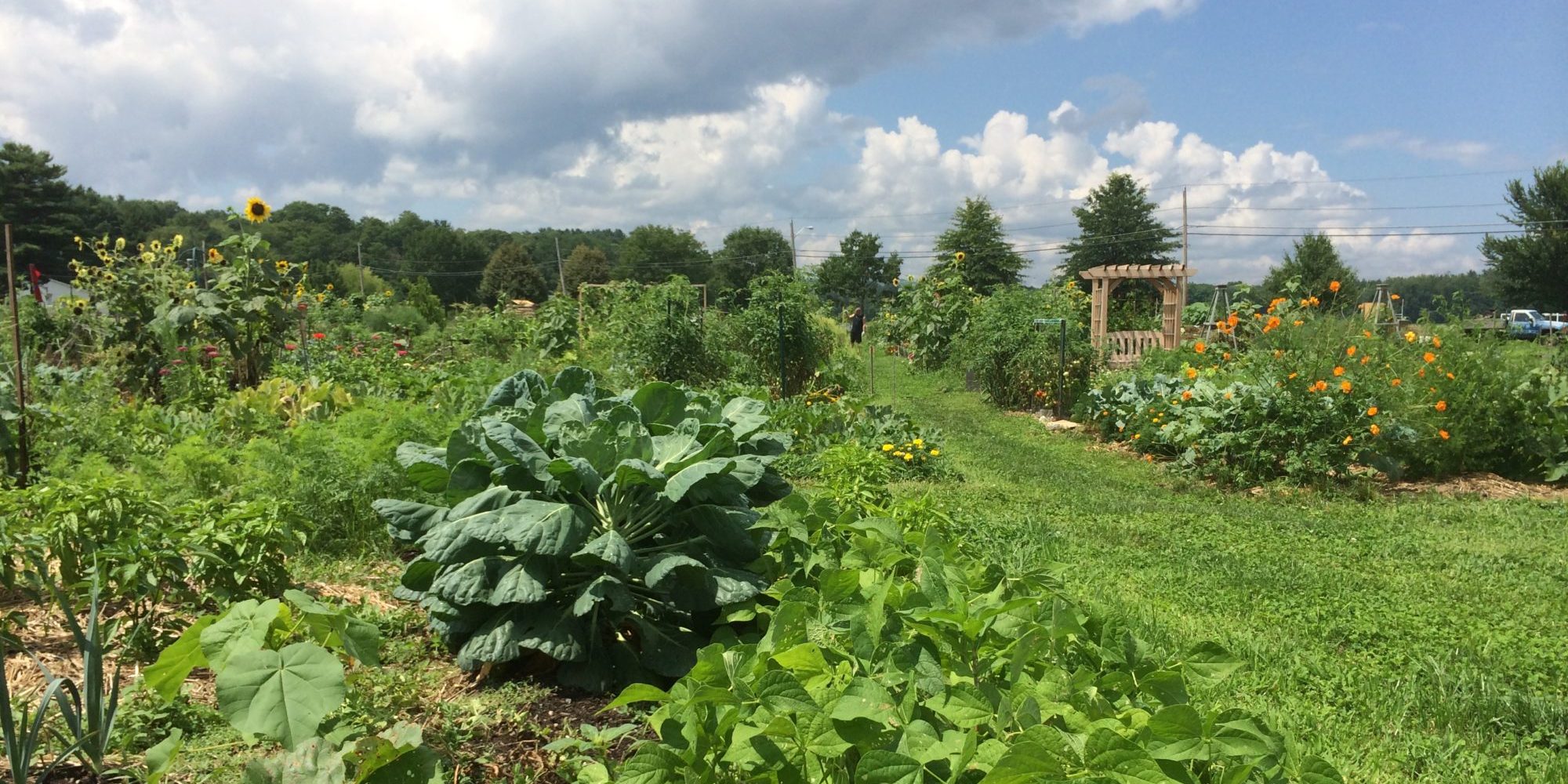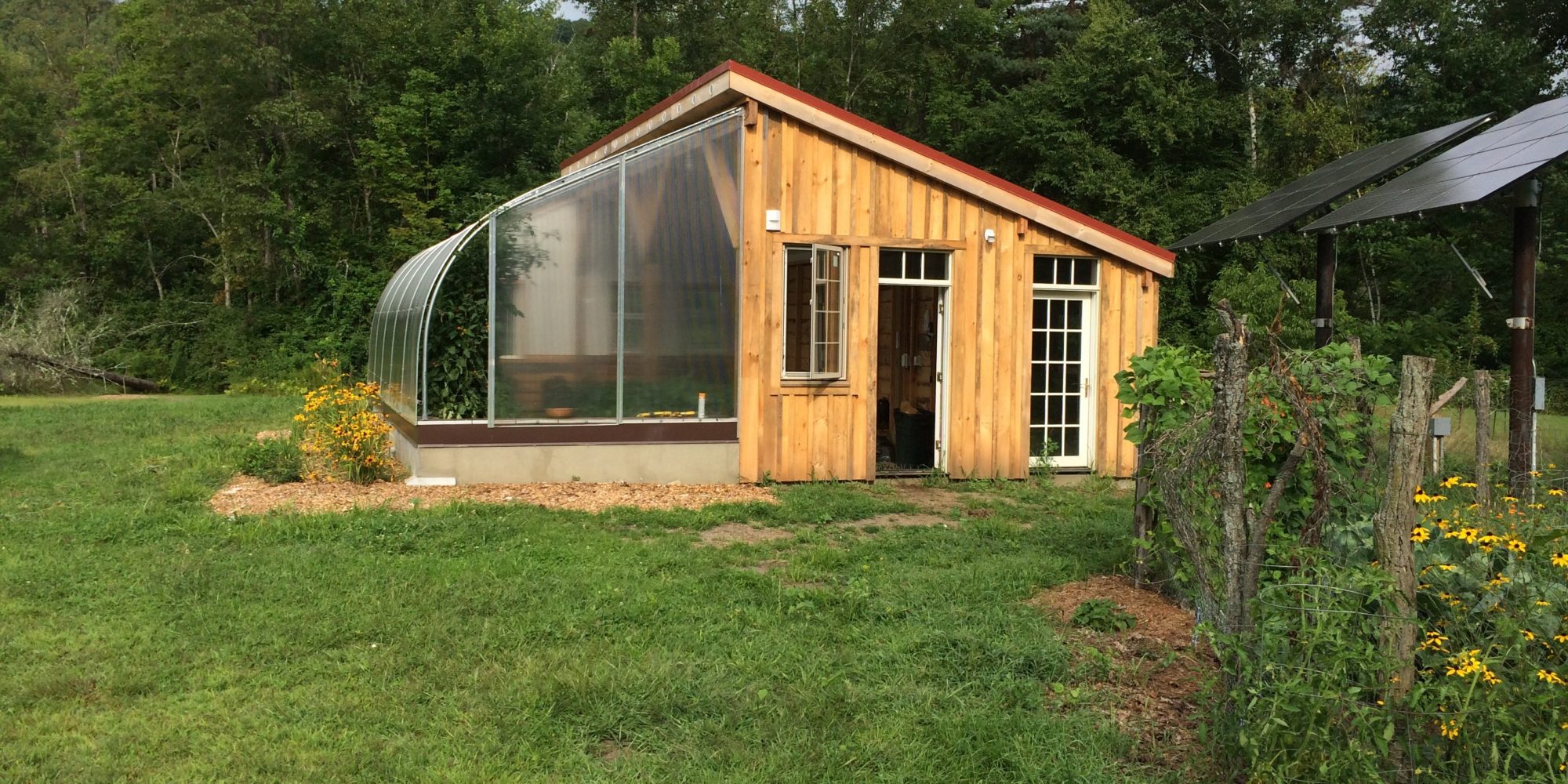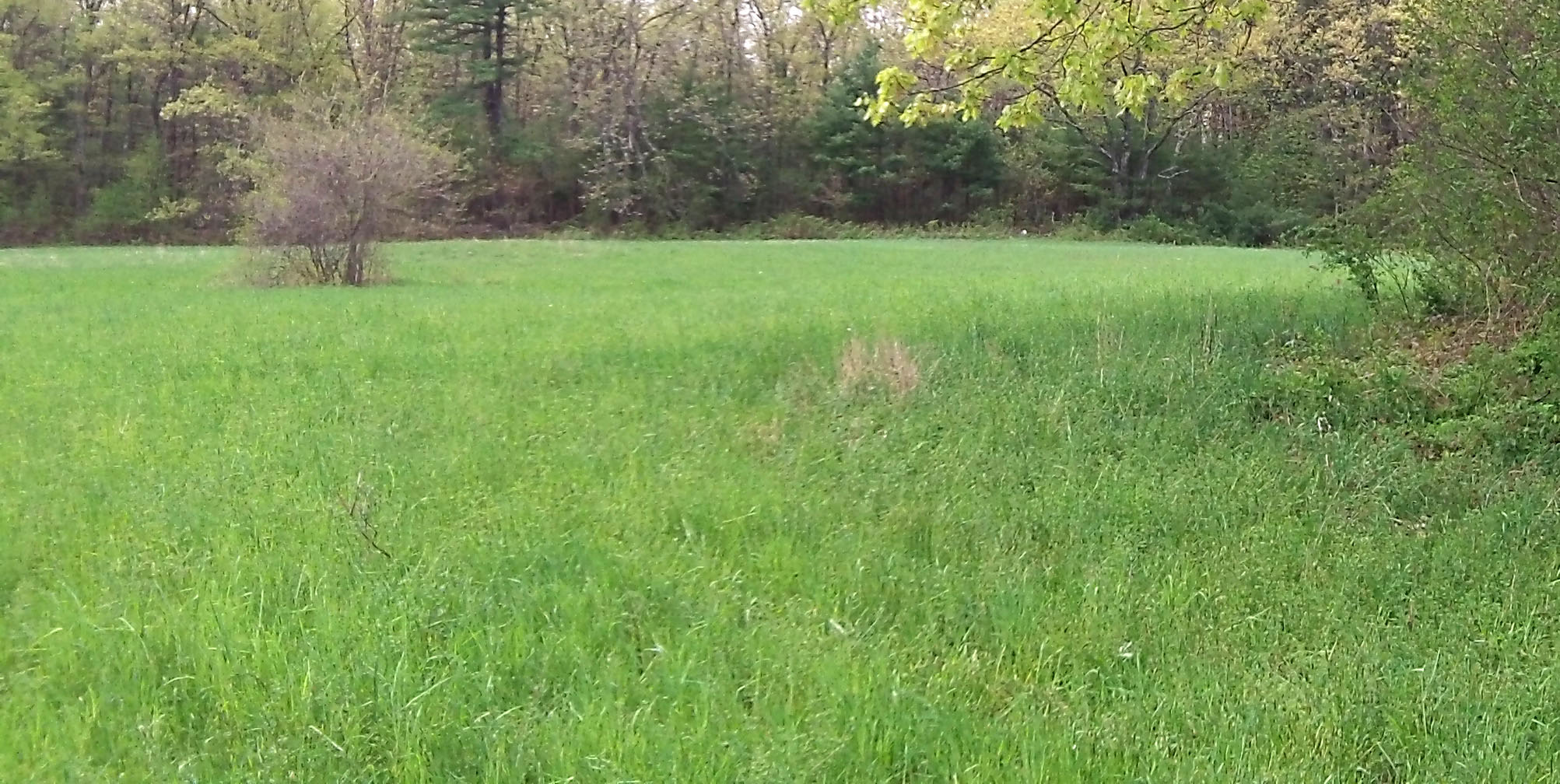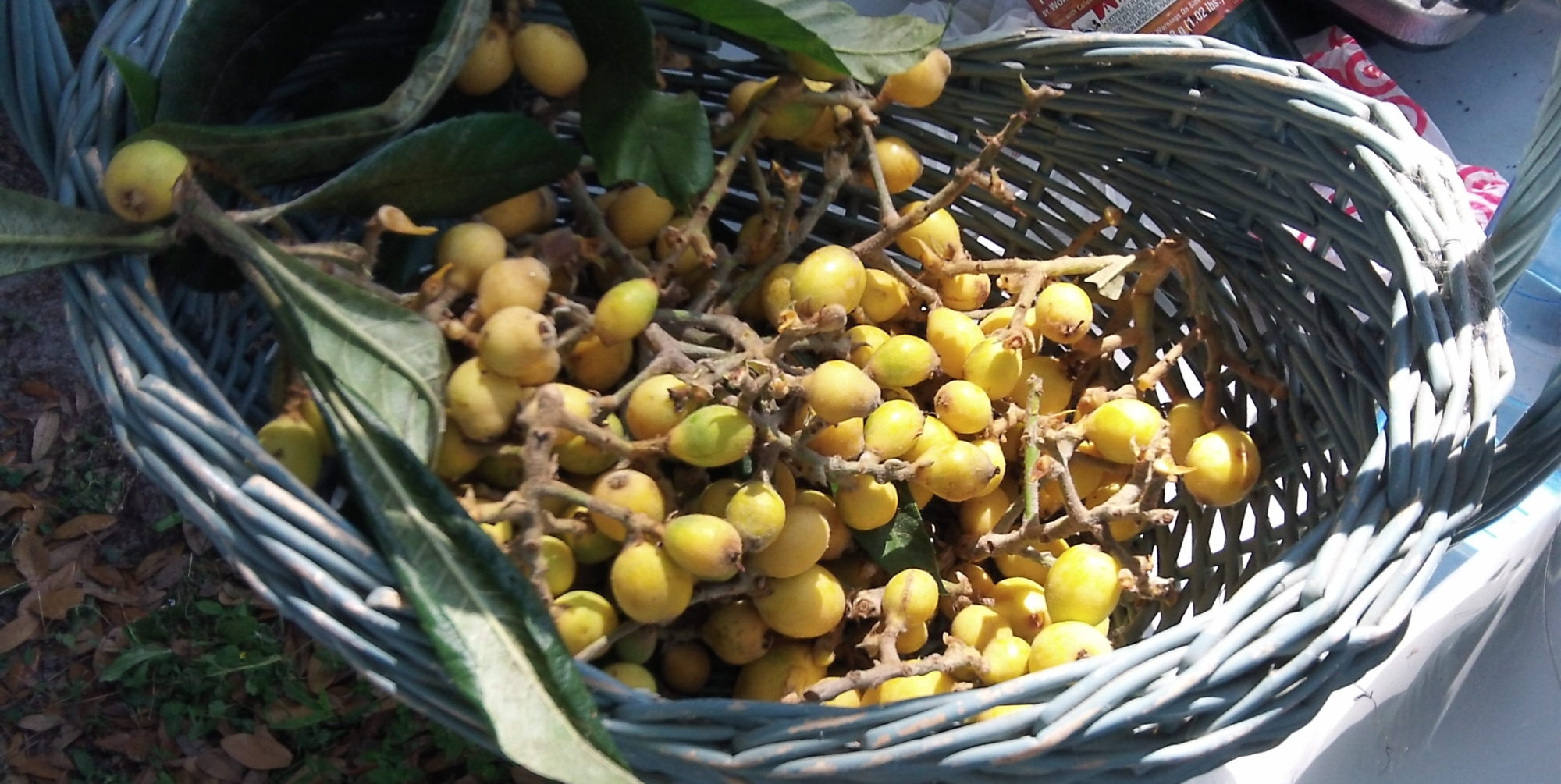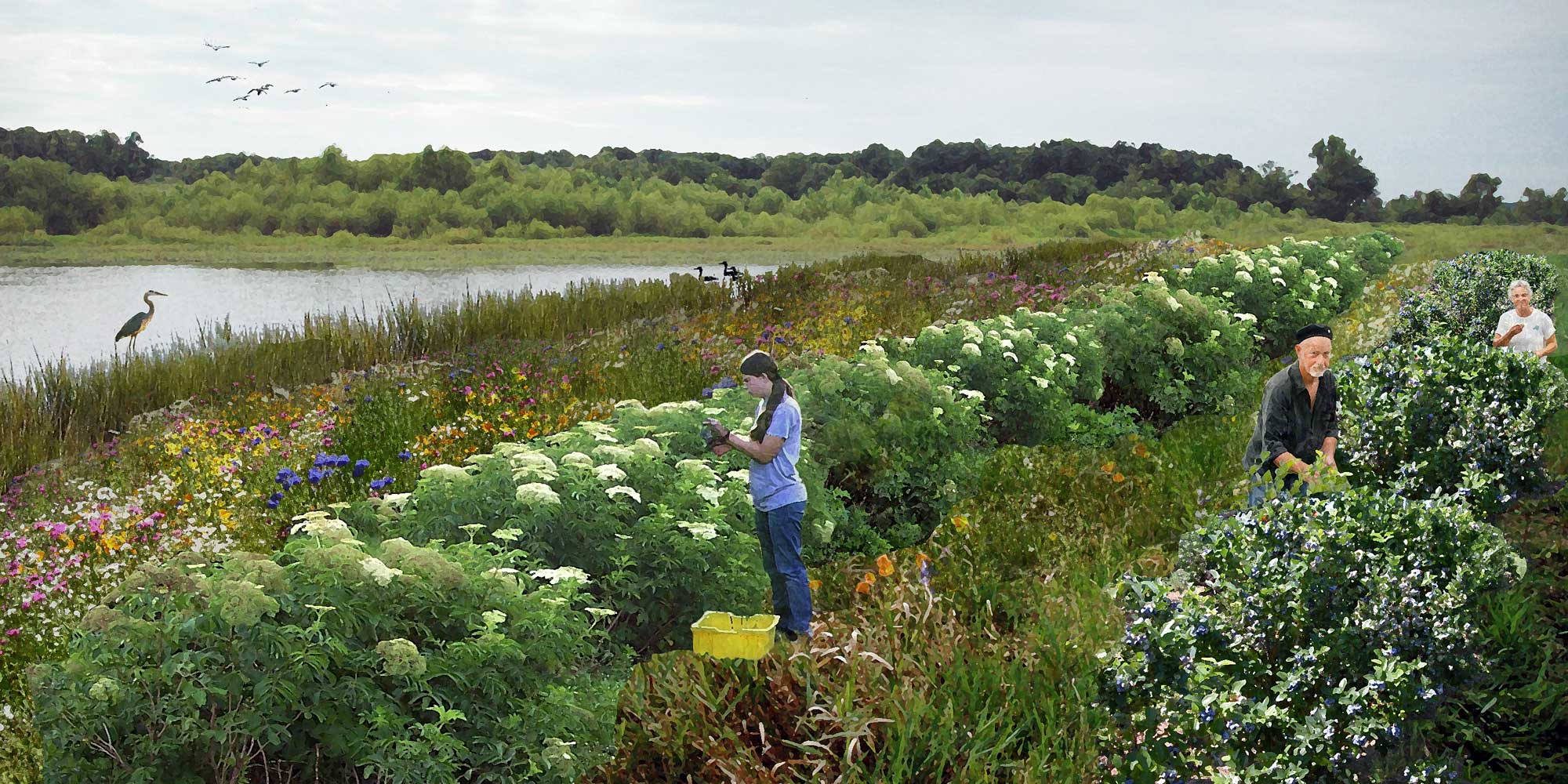Design and installation of a four-season, high-performance, passive solar greenhouse.
Backyard Bioshelter, Greenfield MA
A bioshelter is a high-performance greenhouse which uses the sun to power an indoor ecosystem. Interconnected plant and animal communities support each others’ growth within a high-efficiency structure that incorporates appropriate technologies. Compared with a typical greenhouse, which relies on mechanical means and combustion to maintain favorable growing conditions, a bioshelter uses biological, passive storage, and mechanical systems to extend the growing season.
The bioshelter was designed by Regenerative Design Group for four-season operation in Western Massachusetts. It produces annual vegetables, sub-tropical perennial crops, aquatic foods, and houses chickens for egg production — all within 700 square feet. The region’s cold winters make four-season production difficult and expensive, so the design integrates passive and active solar features, a geothermal system called a “climate battery”, super insulation materials, and various types of mass for heat storage to achieve low energy inputs and reduced operating costs. All electricity for the bioshelter is produced by the ground mounted PV array behind the structure creating a zero-net-energy system. Collaborators include Thom Barry, Architect & Builder, and Jonathan Bates from Food Forest Farm.
Key Features
- Passive solar energy capture
- Aquaculture
- Chicken coop and run
- Rainwater collection and thermal mass regulation
- Raised vegetable beds
- Worm-composting trench
- Subsurface climate regulation
Services Provided
- Site analysis
- Solar and structural modeling
- Digital and graphic rendering
- Installation management
The bioshelter is a part of Bershof’s goal to use less water, less energy, and have a smaller carbon footprint.
Find Harmony in Permaculture, Greenfield Recorder, July 9 2016

